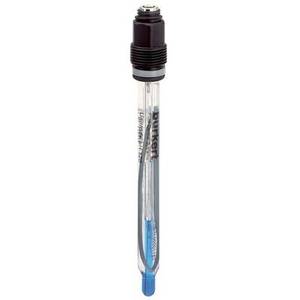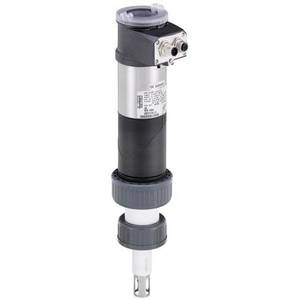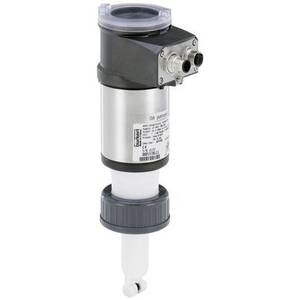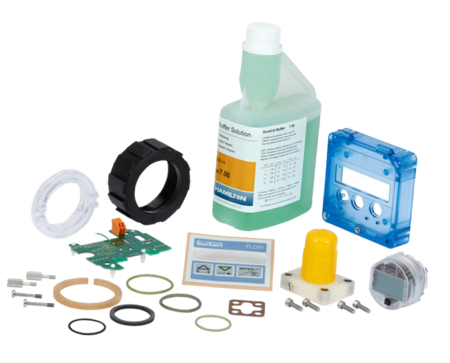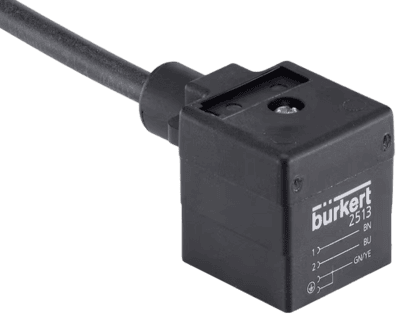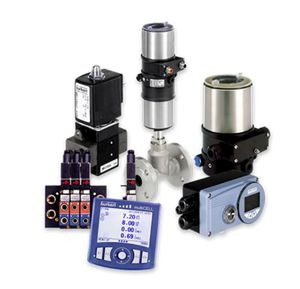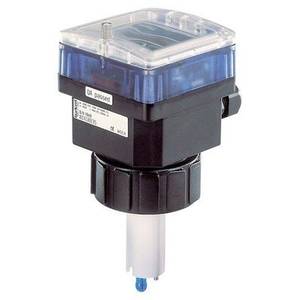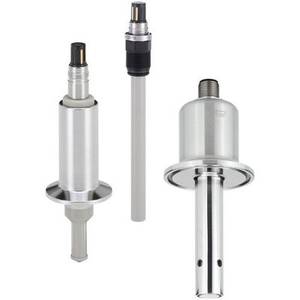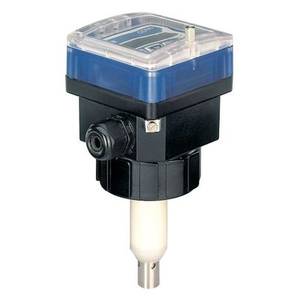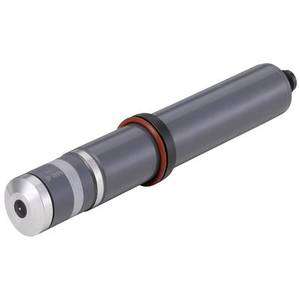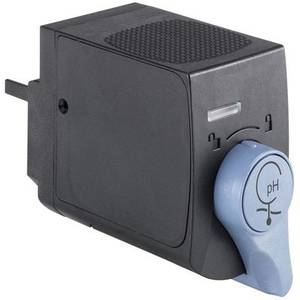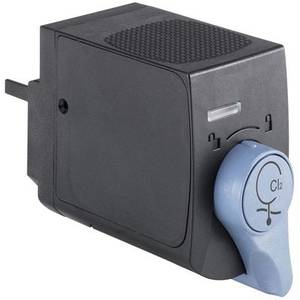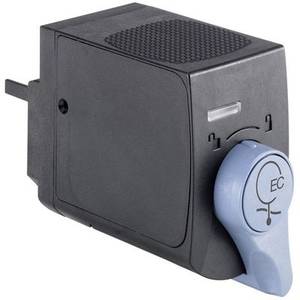Burkert Fluid (Water) Analysis
PH/REDOX-electrode for many different types of installations and applications.
PH/REDOX-electrode for many different types of installations and applications.
Burkert 427114 electric pH probe
- Measurement Range: pH 0-14,
- ORP -1000 to +1000 mV,
- Temperature Range: -10°C to 60°C,
- Materials: Glass, FKM (fluororubber),
- Connection Type: DN 15-400 mm,
- Integrated Display and Keys for Parameter Programming.
Burkert conductivity transmitter
- High accuracy and stability of measurement results
- Wide measuring range
- Made of high quality materials that ensure durability and reliability
Burkert 561686 pH/ORP transmitter
- Type: 8202
- Sensor type: pH or ORP
- Temperature range: 0.00°C - 50.00°C
- Output signal: 4-20 mA
- stainless steel, PVC, EPDM, food quality, PVDF
Burkert 561025 pH sensor
- Flow rate measurement,
- 4-20 mA output,
- magnetic paddle wheel.
Advantages: High sensitivity, easy integration, reliable performance.
561670 Burkert Conductivity transmitter
- Flow rate measurement,
- 12-36V,
- 0-100°C,
- paddle wheel/oval gear
Burkert conductivity meter
- Compact size
- Sensitivity: 10 mS/cm
- Operating temperature range: -20 to 80 °C
568523 Burkert Chlorine sensor
- Durable construction: The detector is made of high-quality materials that ensure its durability and reliability.
- Easy to maintain: the detector is easy to install and maintain.
- Cost-effective: the detector has a low operating cost.
Burkert 566059 Electrolyte for chlorine electrode
- Safety: non-toxic and safe for use in water treatment systems.
- Stability: It is highly resistant to decomposition, so it can be used for a long time.
- Cost-effectiveness: It is economical to use, as it only needs to be changed once every few years.
Compact measuring device designed for the measurement of the pH value or redox potential (ORP). Without electrode nut PVC 1XM12.
Analysis Sensor
pH or ORP meter is a modular device designed for the measurement of oxidation-reduction potentia and pH in clean liquids.
Perfect for usage under harsh conditions for measuring in concentrated liquids ( like acids, caustics or salt-solutions) over a wide measuring range.
Burkert Fluid (Water) Analysis
Burkert provides a range of products and solutions for fluid analysis, particularly in water-related applications. Their offerings include equipment for monitoring and controlling various parameters in water treatment, wastewater management, and other fluid processes. Below we will learn more about water quality monitoring solutions by Burkert.
Burkert Fluid Analysis Products
Burkert produces a wide range of liquid analysis devices, let's take a closer look at them.
pH Measurement
Burkert pH sensors are designed to measure the acidity or alkalinity of water. Maintaining the proper pH level is crucial in various industrial processes and water treatment applications.
Conductivity sensors
Conductivity sensors are employed to measure the electrical conductivity of water, which is an indicator of its purity. These sensors are essential in applications where the level of dissolved solids is a critical parameter.
Turbidity sensors
Turbidity sensors measure the cloudiness or haziness of a fluid caused by large particles. In water treatment, turbidity is an important parameter to monitor as it indicates the presence of suspended solids.
Dissolved oxygen sensors
Dissolved oxygen sensors are used to measure the amount of oxygen dissolved in water. This parameter is vital in aquatic environments, wastewater treatment, and other processes where oxygen levels impact biological activity.
Water flow measurement
Burkert provides flow sensors to measure the flow rate of water. Accurate flow measurement is essential in water distribution systems, industrial processes, and wastewater treatment.
Water level sensors
Level sensors from Burkert are employed to monitor water levels in tanks and reservoirs. Proper level control is critical for efficient water management.
Applications of Burkert Fluid Analysis
Burkert liquid analysis solutions find applications across various industries where accurate monitoring and control of fluid parameters are essential. Burkert fluid analysis products find applications in areas we’ll discuss below.
Water treatment
Burkert fluid analysis plays a crucial role in water treatment plants for monitoring parameters such as pH, conductivity, turbidity, and dissolved oxygen. This ensures the effective treatment and purification of water before distribution.
Wastewater management
In wastewater treatment facilities, Burkert sensors are used to analyze the quality of effluent water. Monitoring parameters like pH, conductivity, and turbidity helps ensure compliance with environmental regulations before releasing treated water.
Food and beverage industry
Burkert fluid analysis solutions are employed in the food and beverage industry to monitor and control processes such as brewing, fermentation, and cleaning. Sensors measuring pH, conductivity, and other parameters contribute to product quality and hygiene.
Pharmaceutical manufacturing
In pharmaceutical production, accurate fluid analysis is critical for ensuring the quality and consistency of products. Burkert sensors can be used to monitor and control parameters such as pH, conductivity, and temperature during various manufacturing processes.
Chemical processing
Burkert fluid analysis is applied in chemical processing industries to monitor the composition and properties of fluids. This includes measuring pH, conductivity, and other parameters to maintain optimal conditions for chemical reactions.
Oil and gas
Burkert sensors are utilized in the oil and gas industry for monitoring fluid parameters such as flow rates, pressure, and temperature. This is crucial for efficient and safe extraction, processing, and transportation of oil and gas.
HVAC
In HVAC systems, Burkert fluid analysis helps maintain optimal conditions by monitoring parameters such as flow rates, temperature, and pressure. This ensures efficient heating or cooling in buildings.
Life sciences and medical devices
Burkert fluid analysis is integral in the life sciences industry for applications like bioprocessing and medical device manufacturing. Sensors are used to monitor parameters such as pH, dissolved oxygen, and conductivity in bioreactors and other processes.
Automotive manufacturing
Burkert fluid analysis solutions play a role in automotive manufacturing processes, especially in monitoring and controlling coolant and other fluids critical for the production of engines and other components.
Mining and minerals processing
In mining operations, Burkert fluid analysis helps monitor and control various parameters in the processing of minerals and ores, ensuring efficient extraction and separation processes.
Agriculture
Burkert fluid analysis is employed in agriculture for monitoring irrigation water quality, ensuring proper pH levels, and managing nutrient concentrations in irrigation systems.
Benefits of Burkert Fluid Analysis
Burkert fluid analysis offers several benefits across various industries, contributing to improved efficiency, process control, and product quality. Here are the key advantages of Burkert water analysis equipment.
Accurate monitoring
Burkert fluid analysis solutions provide accurate and reliable monitoring of critical parameters such as pH, conductivity, turbidity, and dissolved oxygen. This ensures precise control of fluid conditions in different processes.
Quality assurance
In industries such as pharmaceuticals, food and beverage, and water treatment, Burkert fluid analysis helps ensure the quality of end products. Monitoring parameters such as pH and conductivity contributes to the consistency and compliance of manufactured goods.
Resource efficiency
Burkert fluid analysis allows for better resource management by optimizing the use of water, chemicals, and other fluids. This not only reduces waste but also contributes to sustainable practices.
Reduced downtime
Early detection of anomalies through fluid analysis helps prevent equipment failures and reduces unplanned downtime. This contributes to increased overall system reliability and productivity.
Remote monitoring and automation
Burkert fluid sensors for water often integrate with control systems, allowing for remote monitoring and automation. This facilitates real-time decision-making and intervention, especially in critical processes.
Energy savings
Burkert liquid quality analysis solutions enable industries to optimize energy consumption by maintaining ideal fluid conditions. For example, accurate control of water flow and temperature contributes to energy-efficient processes in HVAC systems.
How Burkert Fluid Analysis Works
Burkert fluid analysis involves the use of sensors and instrumentation to monitor and analyze various parameters of fluids in real time. The specific working principles can vary based on the type of sensor and the parameter being measured. Here are common working principles of Burkert fluid analysis products.
pH sensors
pH sensors measure the acidity or alkalinity of a fluid. Burkert's pH sensors typically use glass electrodes that generate a voltage proportional to the hydrogen ion concentration in the solution. This voltage is then converted into a pH value.
Conductivity sensors
Conductivity sensors measure the ability of a fluid to conduct electrical current. Burkert's conductivity sensors typically use two electrodes to pass a small alternating current through the fluid. The resulting conductivity is proportional to the concentration of ions in the solution.
Turbidity sensors
Turbidity sensors measure the cloudiness or haziness of a fluid caused by suspended particles. Burkert's turbidity sensors often use light scattering or absorption principles. As particles in the fluid scatter or absorb light, the sensor detects changes, providing a turbidity measurement.
Dissolved oxygen sensors
Dissolved oxygen sensors measure the concentration of oxygen dissolved in a fluid. Burkert solutions commonly use an electrochemical cell where oxygen diffuses through a membrane and reacts at the electrode, generating a current proportional to the oxygen concentration.
Flow sensors
Burkert flow sensors measure the rate of fluid flow. Different types of flow sensors exist, including electromagnetic, ultrasonic, and paddlewheel sensors. These sensors detect changes in fluid flow and convert them into electrical signals for measurement.
Level sensors
Level liquid analysis instruments monitor the height or level of a fluid in a tank or reservoir. Burkert's level sensors can use various technologies, including float switches, ultrasonic sensors, or pressure sensors, to detect changes in fluid level.
